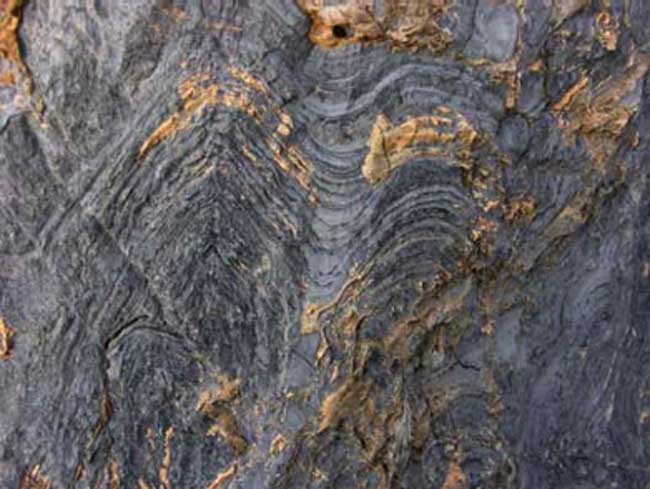Yellowstone Microbes Hint at Earth's Early Life

In Glacier National Park, one can find rocks that are layered like cabbage leaves. These "stromatolites" are the work of microbes that lived more than a billion years ago.
Stromatolites consist of multiple rock layers (or "stone blankets," as the Greek name implies) that formed in shallow, intertidal and sub-tidal environments. Most, if not all, of these rock formations are the remnants of ancient microbial mats that grew on top of each other in successive generations.
Because stromatolites are found in the geologic record as far back 3.5 billion years ago, scientists would like to know exactly who lived in these microbial "high-rise buildings." The answer may be literally just down the road.
In Yellowstone National Park, on the opposite side of Montana from Glacier, David Ward of Montana State University and his colleagues are studying microbial mats in the local hot springs. These modern day microbes are building stromatolites similar to those of their ancient brethren, and so they may provide clues to who the ancient stromatolite-builders were.
"We are studying the present as a key to the past," Ward says.
Ward's group has funding from NASA's Exobiology and Evolutionary Biology program to investigate different mat microbes to see if they leave any tell-tale mark in the stromatolites they create.
Microbial tombstones
Get the world’s most fascinating discoveries delivered straight to your inbox.
The general picture for how stromatolites form is that minerals collect in between the different layers of a microbial mat. Eventually the living conditions change, and the microbes die out, but the minerals crystallize into rock, thereby providing a fossil record of the microbial community.
Evidence for this biological origin is varied. Some organic molecules get entrained in the rock and remain long after the microbes are dead. Geochemists can extract these molecules and identify signatures that life created them.
Stromatolite-building goes on today, but very rarely. In fact, stromatolites practically dropped out of the geologic record after the Cambrian explosion (about 530 million years ago), when animals appeared that eat the mat-forming bacteria.
Due to this predation, microbial mats have retreated to saline lagoons (like Shark Bay on the western coast of Australia) and hot geothermal regions (like Yellowstone).
"They've gone to extreme environments where the animals that eat them can't live," Ward says.
For 33 years, Ward has been studying hot spring microbial mats, trying to catalogue the immense variety of bacteria and archaea that call them home.
"Imagine taking all the bio-diversity in Montana or in a rainforest and shrinking it down to the size of a rock," Ward says in describing a typical mat.
Photosynthesis and the rise of oxygen
The Yellowstone mats being studied by Ward and his colleagues contain photosynthesizing bacteria of two varieties.
Some of these mats are dominated by oxygen-producing cyanobacteria (blue-green algae), while others are composed solely of anoxygenic photosynthesizers that produce sulfur compounds rather than oxygen.
Ward's group is looking to see if these different photosynthesizing mats produce different stromatolites.
"What we're asking is: Can we look at ancient stromatolites and tell if oxygen was being produced?" Ward explains.
How and when the Earth's atmosphere became oxygenated are unresolved questions. If 3.5-billion-year-old stromatolites were formed by cyanobacteria, that has to be reconciled with other evidence that the atmosphere was devoid of oxygen until about 2.4 billion years ago.
The researchers will search for any chemical signature that might hint at who built a given stromatolite.
For instance, the two photosynthesizers make different lipids. These fatty molecules may leave distinctive markers (or "chemical fossils") that could show up in the organic residues found in stromatolites.
"Ideally, geologic and biological research will inform each other," says Andy Knoll of Harvard University, who is not part of this current project. "Studies of ancient stromatolites produce a set of observations in need of explanation by lab and field research of modern systems. Biologists, in turn, can help geologists to view ancient rocks with new eyes."
- Rocking the Cradle of Life
- Wild Things: The Most Extreme Creatures
- Odd Rock Structures Could be Earliest Signs of Life
This article was provided by Astrobiology Magazine.



